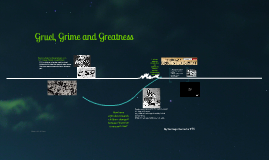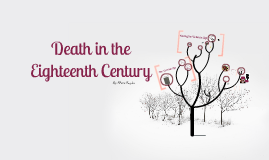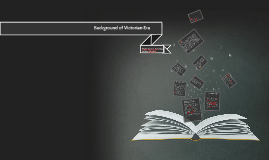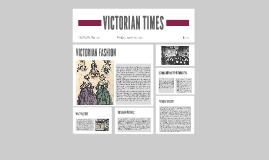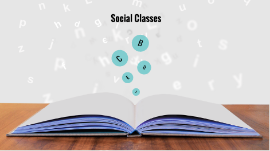Victorian Presentation
Transcript: Fashion during the Victorian Times is very unique and it stands out when looking at fashion history throughout the years. Victorian hats were big. They're giant and decorated with flowers, ribbons, lace, birds and feathers. Men also wore hats and it became improper for a gentlemen to go outside without a hat. Woman often wore corsets under their dresses to reshape their figure and to get the thinnest waist possible. Tiny waists were very popular and seen as attractive during this time. They also wore hoop skirts under their dresses. A hoop skirts is a undergarment that extends the dress or skirt to flair out. For young girls, they would wear similar dresses to the older woman but instead would have high collars to cover their necks and three piece ruffle skirts were common to children. The boys would wear suits on a daily basis. Pants that stopped mid-calf and would layer with jackets and vests. SCHOOLS DURING THE VICTORIAN ERA A few rules that applied to some Victorian classrooms are: Students must stand up to answer questions Students must call teachers "Sir" "Miss" or "Mrs" Students must stand up when an adult walks in the classroom. Students must use their right hand to do their work. Talking and fidgeting will result in a punishment Students who are late, behave poorly or rudely and do bad work will also result in a punishment. During this era, a woman shouldn't have another dream expect to marry, since that is her destiny. November and December are popular months for Victorian weddings. For choosing the exact day, they often looked at a popular rhyme, “Marry on Monday for health, Tuesday for wealth, Wednesday the best day of all, Thursday for crosses, Friday for losses, and Saturday for no luck at all.” This rhyme also feeds into the superstition that the day of the wedding will determine your future. The bride's gown is also a big part of a Victorian Wedding. They would be big, with help from a hoop skirt, and they would wear their corsets for tiny waists. It would have lace detailing and be made out of the finest quality's. The bride would also wear jewelry and, most of the time, wear a present their fiance had gotten them. Victorians took etiquette very seriously. There were many strict rules to what was proper etiquette and compared to what's good etiquette in our time, they're both different and similar in many ways. When greeting someone on the street, you must always be civil and greet one another. Men must bow when greeting with someone, the way someone who is being bowed to reacts depends on how close they are with that person or not. A man should always go out of his way for woman and when a woman might be in need of help, men must also go out of their way to help her. It was also rude to smoke in the presence of a woman or make comments about a woman when she is walking by. When doing these things, you would not be considered a gentleman. During dinner, the appearance of the room and table needs to be well-decorated. The table-cloth needs to be made out of the finest quality and the room should be lit with candles or lamps. The room decor should be arranged so it is not in the way of the guest's views of one another, the center piece should be simple and small. There should be name cards on the table so the guests know where to sit and along with that, there should be a plate, two large knives, a small knife and fork, three large forks and a tablespoon. They should be placed on the right side of the dinnerware. Napkins should be on the left of the plate and the glass should be on the right of the plate. When a man wants to invite a woman to the theater or any sort of place of entertainment, he should write her a letter, referring to himself in the third person. The woman who was invited must make replying her top priority so that if she can't go, the man can invite someone else to accompany him. If the woman accepts and agrees to go to the theater with him, the man must make sure she is comfortable at all times and must not leave her alone. During school, children would learn reading, writing, arithmetic and religion. It was important during school that you follow the strict rules and expectations such as wearing the proper attire. Multiples times a day, the teacher and children will pray. They also had recess, where they would go outside and play for a small amount of time each day. $1.25 Friday, April 28, 2017 VICTORIAN WEDDINGS VICTORIAN FASHION VICTORIAN ETIQUETTE WHAT WAS FUN? What did they do for fun during the Victorian times? Bicycling became an often hobby back then, they even had special attire specifically for bicycling. For board games, they would play chess and backgammon, which is the oldest known board game. Also, the people during this era found an interest in dancing with the influence of Queen Victoria, who did evening concerts. Theaters were also a common activity for people to go and enjoy. Dramas, melodramas, operettas and animal acts are just a few genres they would






